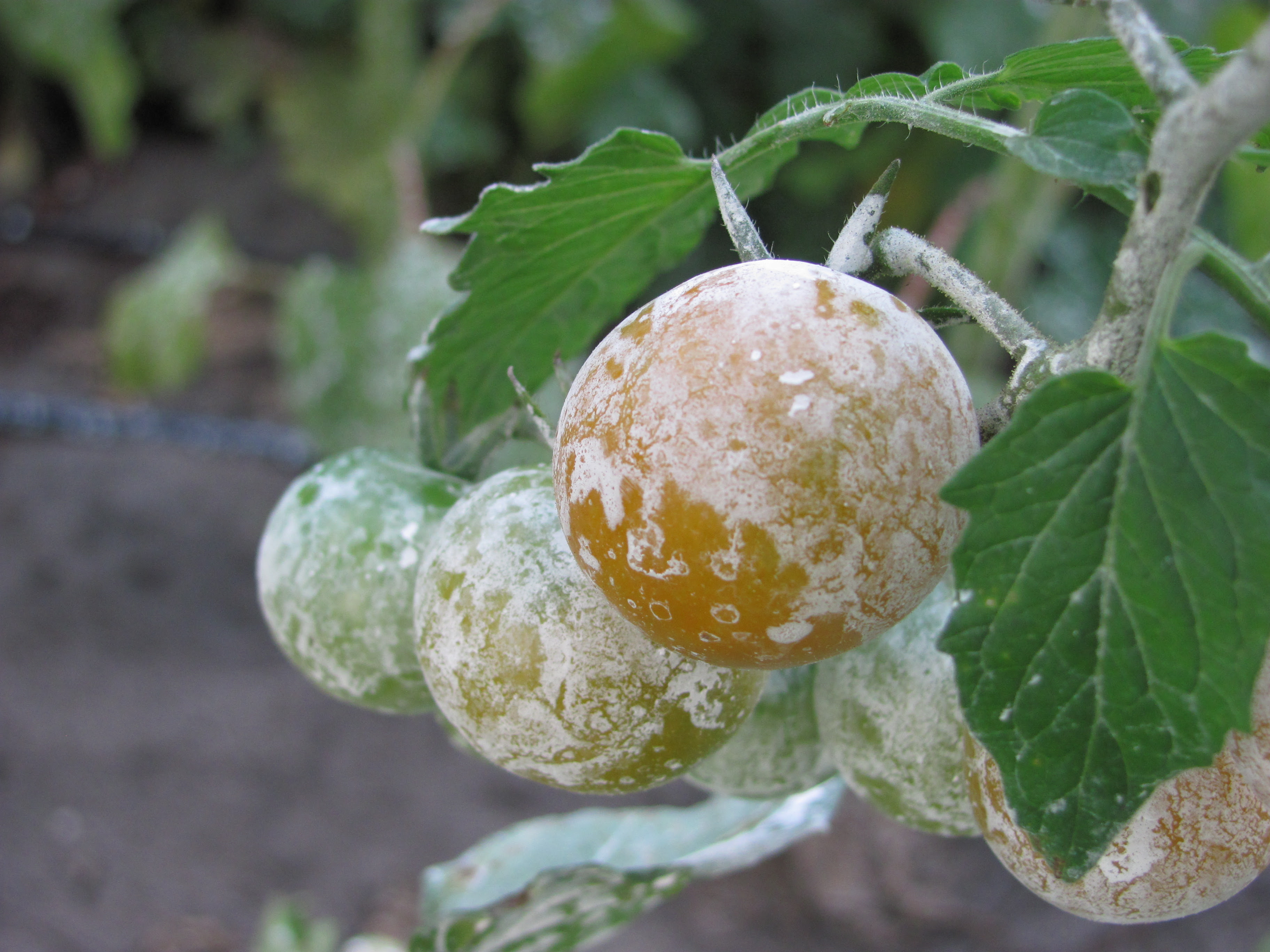
Kaolin clay sprays are an important organic orchard strategy used after petal fall to repel many types of pest insects and protect trees from sunburn and high temperatures. The spray is most commonly used for pears, apples, citrus, and stone fruit. Kaolin clay repels pests by creating a protective barrier on plant surfaces, making the fruit tree an unsuitable environment for certain insects to land, feed and lay eggs. The tiny clay particles serve to disguise the target fruit and can clog the eyes, ears and reproductive organs of many common pest insects. Research confirms that after the application of kaolin clay, insects spend excessive time grooming to try to remove the residue from their bodies until they finally decide to leave the sprayed area. One of the benefits of the spray is that you are not using a broad spectrum pesticide that will kill the insects, rather, you are just creating a deterrent that causes insects to vacate the sprayed area.
The clay can help prevent damage from insects including apple maggot, plum curculio, codling moth, European apple sawfly, cucumber beetle, oriental fruit moth, tufted apple bud moth, white apple leafhopper, and pear psylla.
How and when to use Kaolin Clay Spray

It is important to build up a proper covering of clay with multiple applications of the spray on your trees or it will not be effective. It is suggested that you begin spraying at the first petal fall. Continue to re-apply once a week for six to eight weeks throughout the season. A sprayed tree will be coated by a thin white film of clay particles. Repeat applications after any major rain event are also recommended to provide ongoing protection from pests. Note that extra washing may be required at harvest to remove residue from fruit.
Drawbacks
The extremely fine particle size of kaolin clay lets light through and does not significantly affect plant photosynthesis, however there are some other potential drawbacks to using kaolin clay spray. One of the drawbacks is that the spray can also deter beneficial predators, such as mite predators. Without the necessary control to mite populations, you maybe notice a red mite flare up, which would require you to use a oil sprays. In addition, removal of residue from fruit can be time consuming.
Product Description

While Kaolin clay is a natural product, it is still important to protect yourself while spraying. Long sleeves, long pants, and closed toed shoes are recommended. A mask or respirator is also necessary to prevent inhalation of clay particles.
Instructions for using a backpack or handheld sprayer:
• Mix 1/4 to 1/2 lb (approximately 3 cups) of Surround WP or Surround At Home per one gallon of water. If your sprayer is not easy to shake, premix in a container and pour the mixture into your sprayer
• Add the powder slowly to approximately 1/4 of the water you will be using, stir and mix well by shaking vigorously for 30 seconds.
• Add the remaining water and shake for an additional 30 seconds.
• Shake the sprayer occasionally during application.
• Thoroughly coat all leaf and fruit surfaces until they appear white.
• When finished, spray until the sprayer is empty and flush the system. Leftover mix can be used within 2 weeks to avoid spoilage.
Surround can be purchased in 5lb or 25lb packages. Because the clay will not spoil for many years, you can buy in bulk, save money and use it for multiple years.
These products are also available at many garden centers and farm supply stores.
Sources/ more information of Kaolin:
ATTRA’s Guide to Organic and Low Spray Apple Production
Grow Organic Apples’ Guide to Kaolin Clay
Pest Management Case Study: Quiet Creek Farm, Kutztown, PA. Penn State Extension Start Farming Video
Fungicides, Herbicides, and Insecticides
This edition of POP TIPS prepared with help from 2015 POP orchard intern Sophia Taylor and 2022 Orchard Assistant Erika D’Andrea.
SUPPORT US! If you found this entry useful, informative, or inspiring, please consider a donation of any size to help POP in planting and supporting community orchards in Philadelphia: phillyorchards.org/donate.